Shoulders
shoulder workouts help you achieve the perfect shoulder-to-waist ratio you've always wanted to have. These shoulder workouts get you those brawnier shoulders you've always wanted.
No products in the cart
You May Also Like:




Get 10% on Your First Order claim now
Free U.S. shipping on all orders over $75
shoulder workouts help you achieve the perfect shoulder-to-waist ratio you've always wanted to have. These shoulder workouts get you those brawnier shoulders you've always wanted.
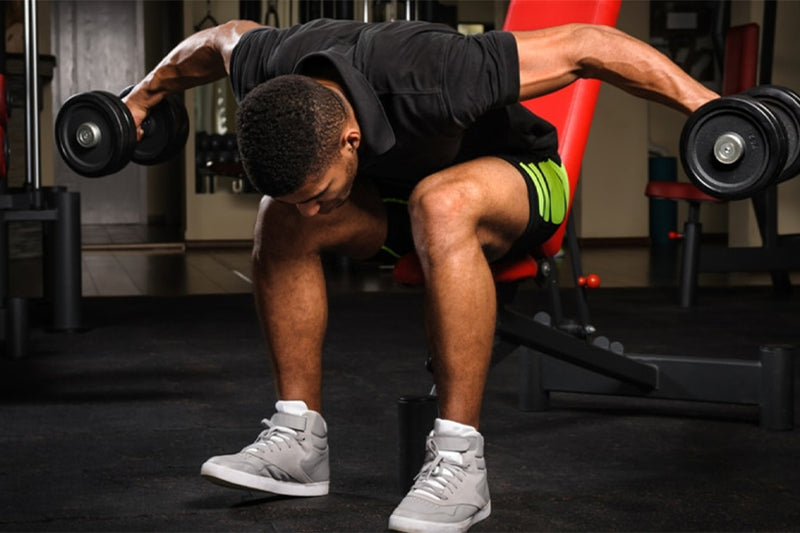
Exercise Description Main Target Muscles Shoulders Secondary Target Muscles Triceps, Middle Back Force Type Pull Workout Type Strength Training Gym Gear Dumbbell, Flat Bench Fitness Level Intermediate Compound/Isolated Isolated Target Muscles: Shoulders, Triceps, Middle Back Seated Rear Dumbbell Lateral Raise Overview Rear lateral raise is among the exercises that promote the rear deltoids' strength and hypertrophy (growth in size). It is also known as the bent-over lateral raise. You can find these little muscles on the backs of your shoulders. Rear lateral raises enhance good posture and facilitate both everyday and sports activity. How to Do It? Sit on a bench while leaning slightly forward with dumbbells in your hands. Keep your palms facing one another directly under your shoulders. Maintaining your arms straight, exhale. Now raise the dumbbells to your sides and towards your upper back simultaneously with a shrugging movement. Continue until your arms become parallel to the ground, keeping them straight. Inhale and lower the dumbbells while maintaining the forward lean in your torso, returning to the starting position. Seated Rear Dumbbell Lateral Raise Tips Ensure that your back is not rounded. Extend your chest out to assist your lower back naturally arched. Breathe. When lifting dumbbells, remember to breathe out. At the top position, concentrate on tightening the shoulder blades together.
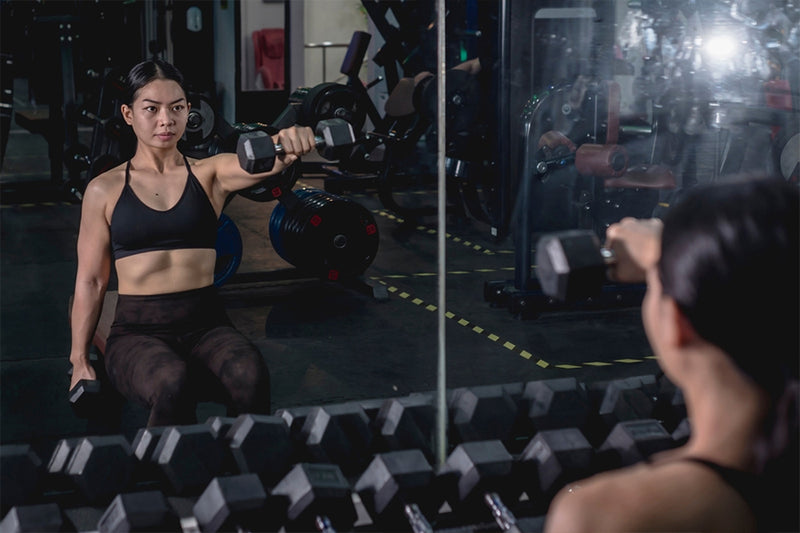
Exercise Description Main Target Muscles Shoulders Secondary Target Muscles None Workout Type Strength Training Gym Gear Dumbbell Fitness Level Beginner Compound/Isolated Isolation Power Move Pull Targeted Muscles: Shoulders Seated Dumbbell Front Raise Overview Dumbbell front raises are an excellent exercise for strengthening your arms and enhancing posture. The anterior deltoid muscles at the front of the shoulders are the objective of this exercise. Strong shoulders are necessary for proper posture, as we all know. The rotator cuff muscles, which are in charge of supporting the shoulder joint, are strengthened due to the dumbbell front raise. By stretching your chest and front of the shoulders, this exercise can also help you increase your range of motion and avoid injuries. How to Do It? Start by sitting on a bench with your feet shoulder-width apart and holding a dumbbell in each hand at arm's distance in front of you with your palms facing your thighs. Slowly raise the dumbbells to your shoulder height. Hold the dumbbells approximately 4 inches away from your body. Pause for a few seconds when you reach the top before lowering them back down to the initial position. That's one rep. Repeat for the desired number of reps. Seated Dumbbell Front Raise Tips Start from lightweights. You can increase your weight as you get comfortable. Keep your abdominal muscles pulled in, and don’t swing the weights as you raise and lower them. Avoid arching your back as you lift the weights. Instead, keep your spine in a neutral position.
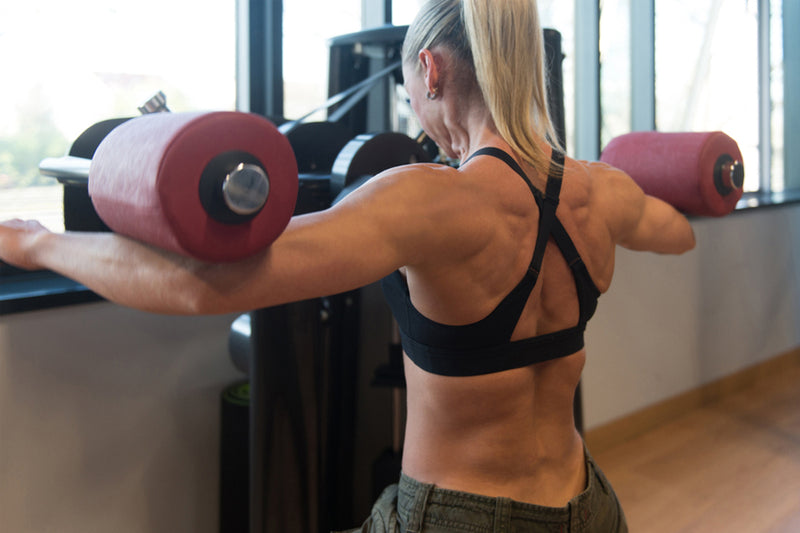
Exercise Description Main Target Muscles Shoulders Secondary Target Muscles None Workout Type Strength Gym Gear Machine Fitness Level Beginner Compound/Isolated Isolated Power Move Push Target Muscle: Shoulders Machine Side Lateral Raises Overview Side lateral raise is a powerful shoulder-strengthening exercise that targets the lateral head of the deltoid muscles in the shoulder. When done frequently, this can aid in developing stronger, wider shoulders. You only need a couple of light dumbbells or a machine and enough shoulder range of motion to abduct your arms, which involves moving the weights out and away from your body until they create a "T" shape at your shoulders. How to Do It? Start by choosing the weight you want to utilize on the stack of a lateral raise machine. Sit facing the machine with your feet flat on the floor and about shoulder-width apart. Adjust the seat height. Grip the handles while securing your arms to the cushion. Look directly forward. Now is the time to start the exercise. Push the weight until your forearms are just above parallel while keeping your elbows bent and moving at the shoulders. At the movement's peak, tighten your shoulders, then slowly start decreasing the weight while utilizing the same semicircle motion you used to elevate it. Repeat as many times as needed. Machine Side Lateral Raises Tips The form is more crucial than weight in this isolated exercise, so keep it in check. Use the tight form to keep the delts working. Use your entire range of motion. Throughout the movement, maintain as much body stillness as possible, moving only your shoulders.
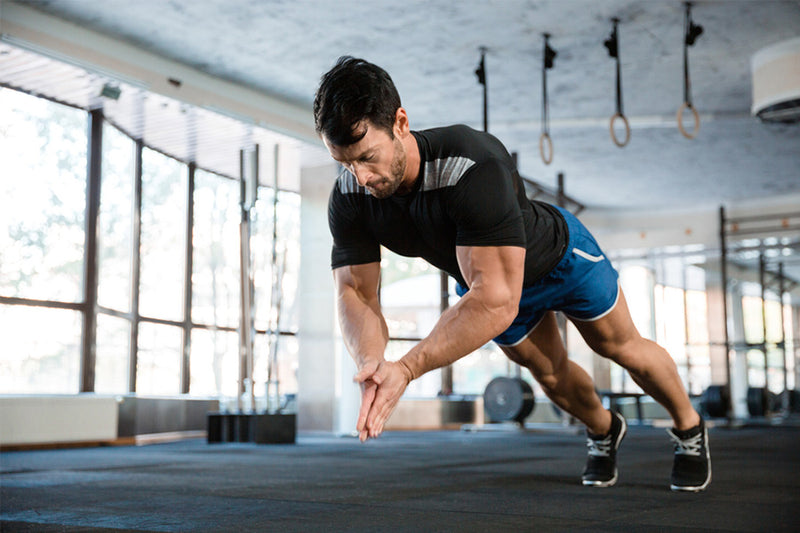
Exercise Description Target Muscle Group Shoulder, Chest, and Arms Secondary Muscles Triceps Brachii Exercise Type Strength Equipment Required Bodyweight Experience Level Advanced Compound/Isolated Compound Force Type Push Targeted Muscles: Shoulder, Chest, and Arms Hand Clap Push Up Over View The muscles that are targeted in hand clap push up are the chest, shoulders, and triceps. There are many benefits to training the shoulder, chest, and arms. These muscles help to stabilize the shoulder joint, and they also help to generate power when we push or pull. Additionally, strong shoulders, chest, and arms can help to improve our posture and prevent injuries. How to Do It? To perform a hand clap push up, start in a standard push up position. Lower yourself down to the ground, and then explosively push off of the ground and clap your hands together in mid-air. Return to the starting position and repeat. Make sure that you keep your core engaged throughout the entire movement to avoid injury. Tips for Performing Hand Clap Push Ups Before attempting a hand clap push up, it is important to build up your strength and stability by performing regular push ups and other exercises that target the shoulder, chest, and arms. Once you have built up your strength, make sure that you warm up thoroughly before starting your workout. When performing the hand clap push up, be sure to keep your core engaged and avoid arching your back. If you feel any pain in your shoulders, chest, or arms, stop immediately and consult a doctor or certified personal trainer.
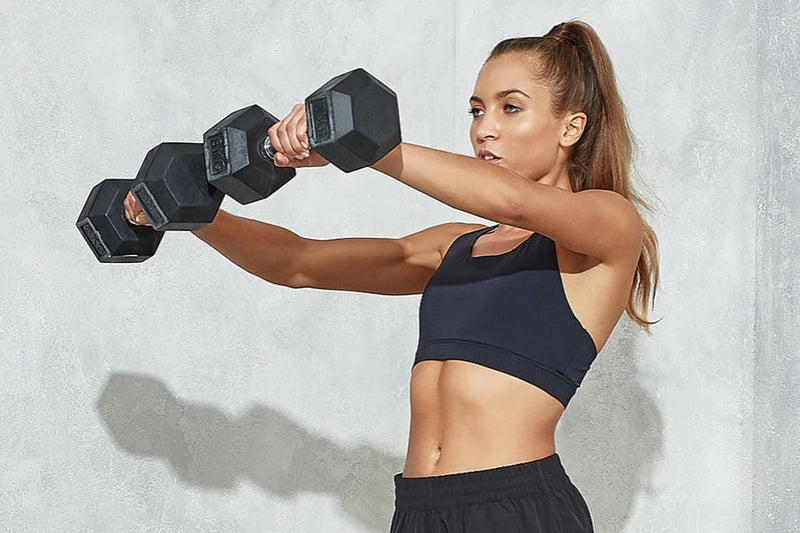
Exercise Description Main Target Muscles Shoulders Secondary Target Muscles None Workout Type Strength Training Gym Gear Dumbbell Fitness Level Beginner Compound/Isolated Isolation Power Move Pull Target Muscle: Shoulders Dumbbell Front Raise Overview From firming up your arms to improving your posture, dumbbell front raise is an excellent exercise. This move targets the anterior deltoid muscles located at the front of the shoulders. As we all know, strong shoulders are essential for good posture. The dumbbell front raise also helps to strengthen the rotator cuff muscles, which are responsible for stabilizing the shoulder joint. In addition, this exercise can help to improve your range of motion and prevent injuries by stretching your chest and front of the shoulders. How to Do Start by standing with your feet shoulder-width apart and holding a dumbbell in each hand at arm's length in front of you with your palms facing your thighs. Slowly raise the dumbbells up to shoulder height. Hold the dumbbells roughly 4 inches away from your body. Pause for a moment when you reach the top before lowering them back down to the starting position. That's one rep. Repeat for the desired number of reps. Dumbbell Front Raise Tips Use a lightweight to start. You can increase the weight as you get comfortable. Keep your abdominal muscles pulled in, and avoid swinging the weights as you raise and lower them. Don't arch your back as you lift the weights. Instead, keep your spine in a neutral position. To make this exercise more challenging, try lifting one dumbbell at a time.
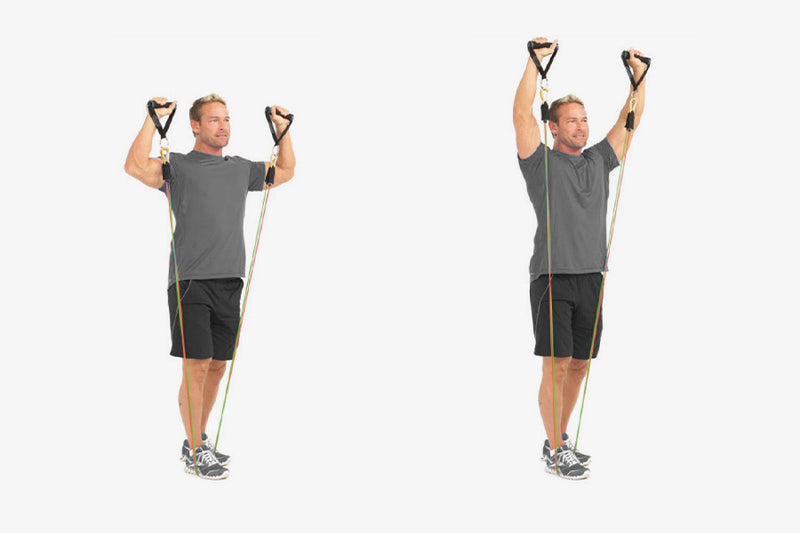
Exercise Description Main Target Muscles Shoulders Secondary Target Muscles Traps, Abs, Triceps Workout Type Strength Gym Gear Bands Fitness Level Beginner Compound/Isolated Compound Power Move Pull Target Muscle: Shoulders Standing Band Shoulder Press Overview The Standing Band Shoulder Press is a great exercise for overall shoulder development. By using a band, you can create resistance in all directions, which is essential for balanced muscle growth. Additionally, the Standing Band Shoulder Press allows you to keep good form while still challenging your muscles, which is important for preventing injuries. How to Do Start by standing with your feet shoulder-width apart, step on one side of the band and hold the other side of the resistance band in each hand with your palms facing forward. Raise your arms up to shoulder height, keeping your elbows and wrists in line with your shoulders. From here, press the bands overhead, extending your arms fully. Return to the starting position. Repeat for the desired number of reps. Standing Band Shoulder Press Tips Keep your abdominal muscles pulled in tight and avoid arching your back throughout the exercise. Don't let your elbows flare out to the sides as you press the bands overhead. Focus on pressing from your shoulder, not just your arms. Keep the momentum out of the way.
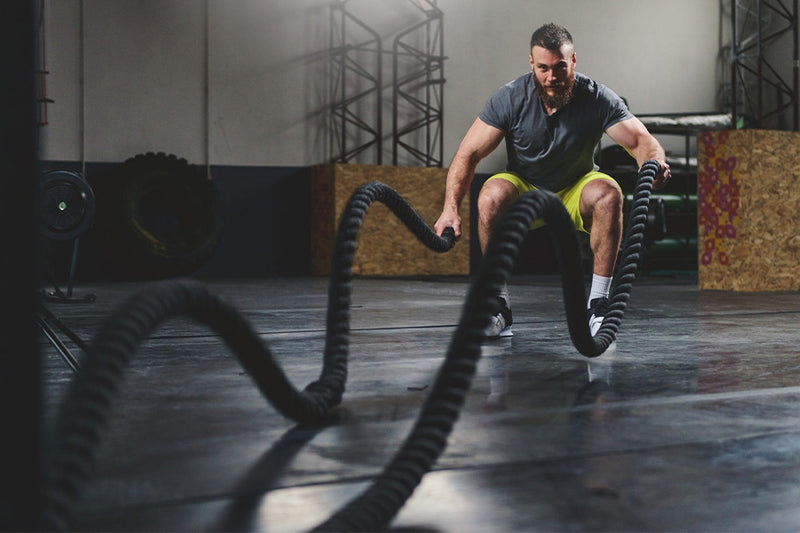
Exercise Description Main Target Muscles Shoulders Secondary Target Muscles Abs, Forearms, Lats, Traps Workout Type Conditioning Gym Gear Rope Fitness Level Beginner Compound/Isolated Compound Power Move Push Target Muscle: Shoulders Battle Rope Slams Overview Battle Rope Slams is a powerful exercise that primarily targets your shoulders, core, and arms. It is a great exercise for improving your overall strength and conditioning. Whether you are performing shoulder workouts or push workouts, this would be an exceptional exercise to be incorporated into your workout routine. How to Do It Start by gripping the rope in both hands with your feet shoulder-width apart. Raise the rope over your head and then slam it down onto the ground as hard as you can. Do it in a wave-like motion by fully extending your arms and hips before slamming. Repeat this movement for 30 seconds to 1 minute. Battle Rope Slam Tips The heavier the rope, the more challenging the exercise will be. If you are new to this battle rope exercise, start with a lighter rope and gradually work your way up. Be sure to keep your core squeezed throughout the entire exercise. This will help you maintain good form and prevent injuries. Keep your arms slightly bent as you slam the rope down. This will help protect your shoulders from injury. Focus on using your shoulders and arms to generate the power for the exercise. Your legs should be used primarily for stability.
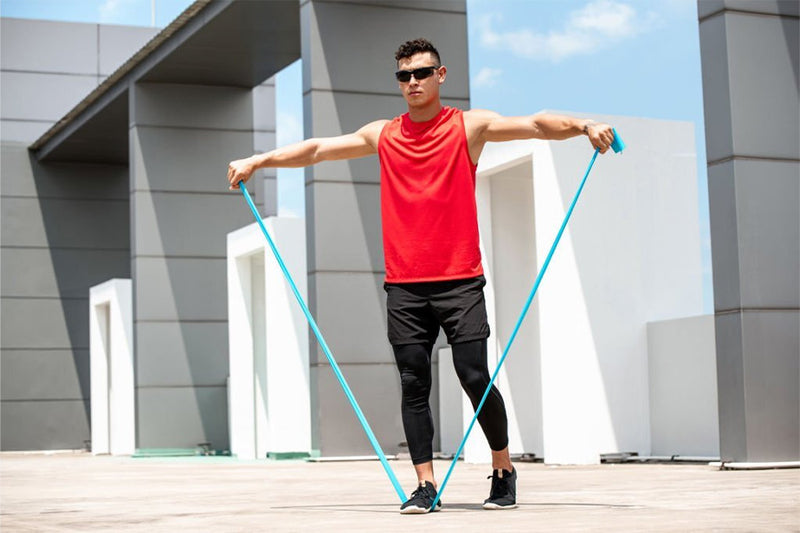
Exercise Description Main Target Muscles Shoulders Secondary Target Muscles None Workout Type Strength Gym Gear Band Fitness Level Beginner Compound/Isolated Isolation Power Move Pull Target Muscle: Shoulders Banded Lateral Raise Overview The lateral raise is a great move for toning the shoulders. Using a resistance band forces you to use more stabilizer muscles, which helps to create a more well-rounded workout. It provides constant resistance throughout the entire range of motion, which helps to better target the shoulder muscles. Third, the resistance band can be easily adjusted to provide different levels of difficulty, making it a great exercise for both beginners and advanced athletes How to Do It Start by standing up straight, feet shoulder-width apart, with a resistance band looped around both wrists in front of you. Keeping your core engaged, raise your arms out to the sides until they’re parallel with the ground. Pause for a moment, then slowly lower your arms back to the starting position. Repeat for the desired number of reps Banded Lateral Raise Tips Keep your shoulders down and your core engaged throughout the exercise. Don’t swing your arms as you raise them; use controlled motions only. If the resistance band is too light, try a heavier one. If it’s too heavy, try a lighter one. If you have any pain in your shoulders or elbows, stop the exercise and consult a doctor or physical therapist
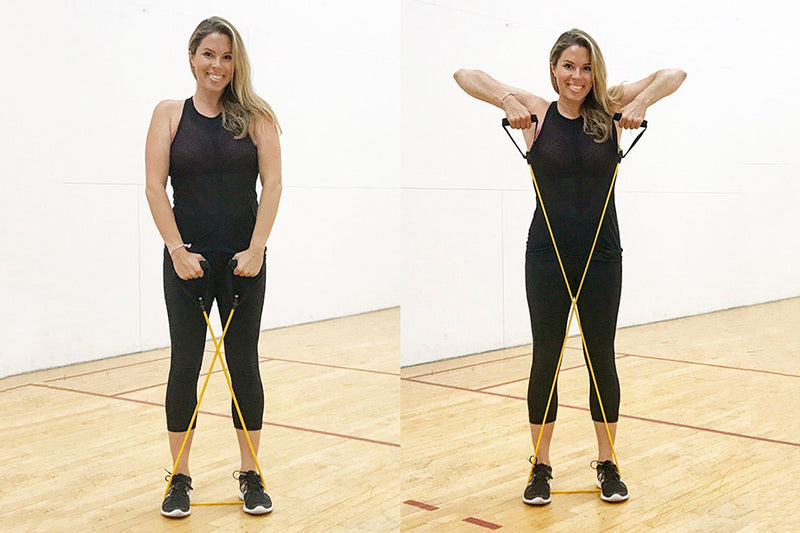
Exercise Description Main Target Muscles Shoulders Secondary Target Muscles Biceps, Traps, Upper Back Workout Type Strength Gym Gear Bands Fitness Level Beginner Compound/Isolated Compound Power Move Pull Target Muscle: Shoulders Banded Upright Row Overview If you're looking for a workout that hits multiple muscle groups at once, you can't go wrong with the upright row. This move is especially effective when done with a resistance band, as it allows you to really maximize the tension on your muscles. The upright row targets your shoulders, biceps, and traps, making it a great exercise for building overall upper-body strength. It also helps improve posture and can be used as part of a warm-up or cool-down routine. Plus, the band provides a challenge that helps you maintain good form throughout the entire movement. So if you're looking for a versatile and effective exercise, be sure to give the upright row a try. How to Do Begin by standing on the center of the resistance band, and hold the band with your palms facing your body. Keeping your feet shoulder-width apart, bend your knees slightly and hinge at your hips to lower your torso until it’s nearly parallel to the floor. From here, press through your heels to return to standing, and as you do, row the band up toward your chest, leading with your elbows. When the band reaches chest level, pause and squeeze your shoulder blades together before slowly lowering them back to the starting position. Repeat for the desired number of reps. Exercise Tips Make sure to keep your core engaged throughout the movement to avoid arching your back. If the band is too light, try doubling it up or using a heavier resistance. For an added challenge, you can also do this exercise with one arm at a time.
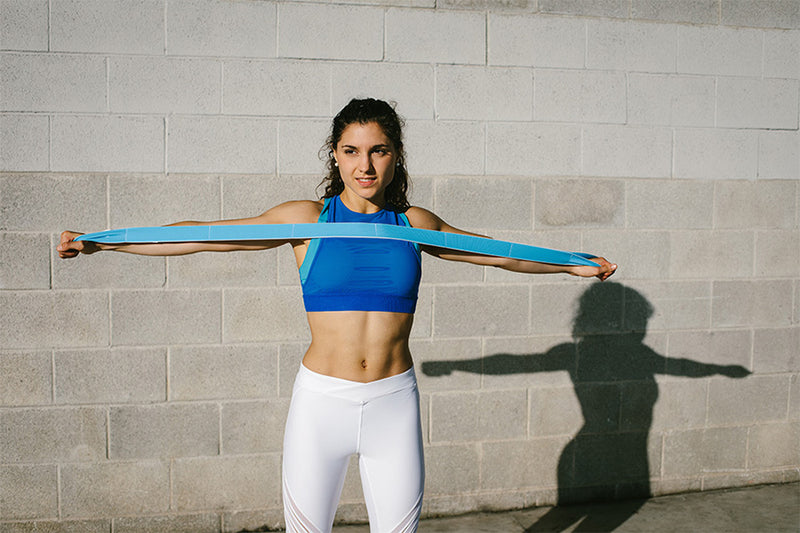
Exercise Description Main Target Muscles Shoulders Secondary Target Muscles Traps, Upper Back Workout Type Activation Gym Gear Bands Fitness Level Beginner Compound/Isolated Compound Power Move Pull Target Muscle: Shoulders Band Pull Apart Overview If you're looking for a workout that targets multiple muscle groups and gets your heart rate up, you can't go wrong with a pull-apart with a resistance band. This exercise is ideal for beginners and experts alike, and it can be performed anywhere with minimal equipment. Plus, it's a great way to improve your posture and prevent injuries. It also enhances your range of motion and flexibility. How to Do Use a resistance band that provides sufficient resistance. Anchor the band around a sturdy object at about chest height. Grasp the band with your palms facing each other, and step away from the anchor point until there is tension on the band. Keeping your shoulders down and your core engaged, exhale as you slowly pull the band apart, maintaining tension on the band throughout the movement. Pull it till it nearly touches your chest Inhale as you return to the starting position. Exercise Tips Maintain a neutral spine throughout the movement. Make sure your head does not get forward. In order to target your upper back, keep a slight bend in your elbows. If you wish to intensify the workout, try to focus on pushing your hands apart after you have pulled the band apart.
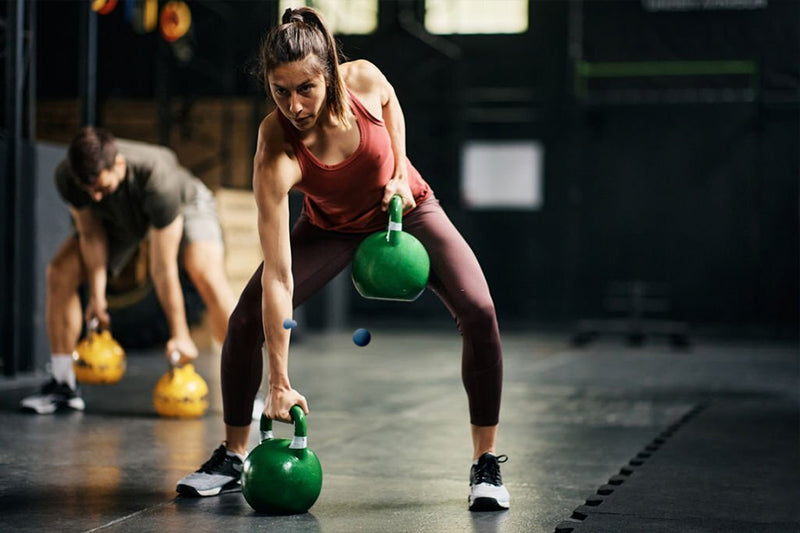
Exercise Description Main Target Muscles Shoulders, Core, Back Secondary Target Muscles Abs, Adductors, Biceps, Forearms, Glutes, Hamstrings, Shoulders, Traps, Triceps, Upper and Lower Back Workout Type Olympic Weightlifting Gym Gear Kettlebell Fitness Level Intermediate Target Muscle Group: Back/Core Kettlebell Gorilla Overview Gorilla rows, as you would expect, are an excellent back-builder and a welcome alternative for the common bent-over, T bar, single-arm dumbbell and single-arm dumbbell row that most exercisers rely upon. The gorilla row is the perfect option if you are tired of the same old back exercises, and want to increase your strength and size to the silverback level. How to Do It? Two kettlebells should be placed on the ground, about hip-width apart. The handles should be parallel. Your kettlebells should be parallel to your feet. To grasp the handles, bend your knees slightly and hinge forward from your hips. To make room for the weights, push your knees forward. Keep your core firm and ensure your lower back is not round. Keep one kettlebell in your hand and row the other weight back towards your hip. Keep your wrist straight and lead with your elbow. The kettlebell should be lowered to the ground, and you can then do the same thing on the other side. For the remaining set, continue to alternate your arms. Kettlebell Gorilla Tips Experiment with head position and see which option (looking forward vs. packing the neck) works better for you. Keep same tone through your abdominals as you pull the kettlebells into your body to ensure you don’t arch excessively through your spine. Don’t allow momentum to dictate the movement, control the kettlebells throughout each rep. If you feel your biceps are overused and your back remains underactive, consider utilizing a false grip (i.e. don’t wrap the thumb around the handle). Don’t allow the head to jut forward as you pull.
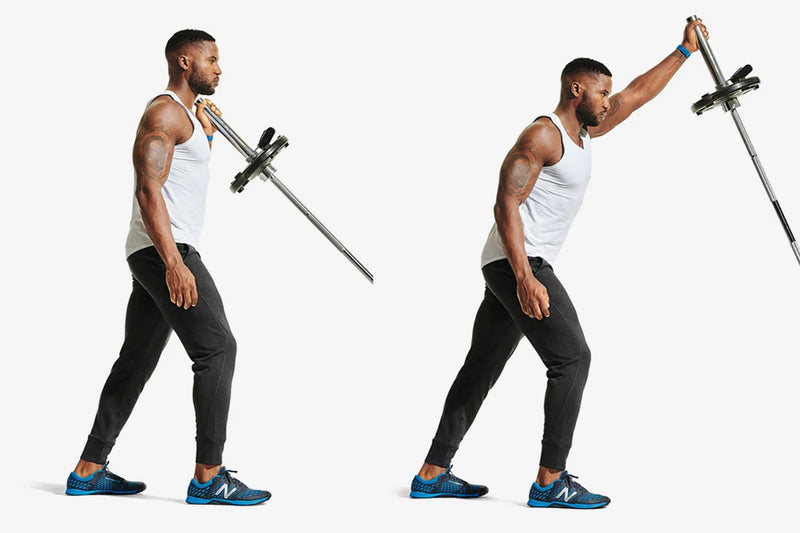
Exercise Description Main Target Muscles Shoulders Secondary Target Muscles Abs, Traps, Triceps Workout Type Strength training Gym Gear Barbell Fitness Level Intermediate Compound/Isolated Compound Power Move Push Target Muscles: Shoulders, Abs, Traps, Triceps Single Arm Landmine Press Overview The single-arm landmine press is a variation of the shoulder press that focuses on shoulder muscles. This will also train the triceps and traps muscles indirectly. Each deltoid is worked unilaterally by the single-arm landmine press. This allows you to isolate each side, ensuring that they grow and strengthen simultaneously. How to Do It? First, stand with your spine straight, and your feet should be wide open. Hold the barbell in one hand while keeping the other on your ribs to watch your spinal alignment. Breathe deeply and push to lockout by stretching the elbow and the shoulder, keeping the barbell in place. Slowly bring the barbell down to your shoulder's starting position. Single Arm Landmine Press Tips When the knee is in flexion, press with the opposite arm. Allowing the head to lean forward considerably is not a good idea. Exhale as you squeeze the bicep towards the ear. Look for lack of thoracic spine extension or shoulder flexion if you feel any pressure in your neck or traps throughout the action. Maintaining strain on the shoulders by keeping the elbows slightly bent at the top and without locking out completely. If you can't lock your elbows out overhead, it could indicate inadequate shoulder mobility caused by upward scapular rotation. Make sure your rib cage isn't protruding and that you're not in a position of severe hyperextension. To avoid yourself from overreach as you press, have a staggered stance.
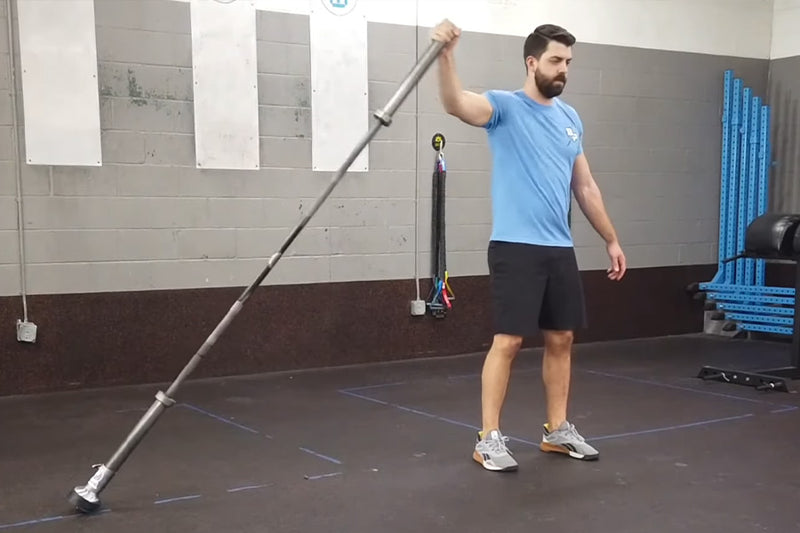
Exercise Description Main Target Muscles Shoulders Secondary Target Muscles Traps Force Type Pull Workout Type Strength training Gym Gear Landmine Fitness Level Intermediate Compound/Isolated Isolated Target Muscles: Shoulders Landmine Lateral Raise Overview The landmine lateral rise is a variation of the lateral raise that requires you to move in a relatively fixed plane of movement. It's a shoulder workout that focuses on the muscles in the shoulder. The landmine lateral raise involves the rear delts to a little larger extent than other standing lateral raise variants. How to Do It? Stand straight with your spine stable and your feet in a squat pose. With one hand, use a pronated grip to grasp the barbell to your body's front. Raise your arm over your torso, retaining the elbow stretched, and stand tall at the top. Drop the barbell back to the initial position slowly and steadily. Repeat until the desired number of reps. Landmine Lateral Raise Tips As you elevate the barbell, ensure you are not leaning backwards. Inhale as you lower the barbell and exhale as you lift it to the top of the action. Try soft tissue work for the pecs and thoracic spine in case you're having shoulder soreness at the top of the action. Allowing the head to lean forward considerably is not a good idea. Make sure your rib cage isn't protruding and that you're not in a position of severe hyperextension.
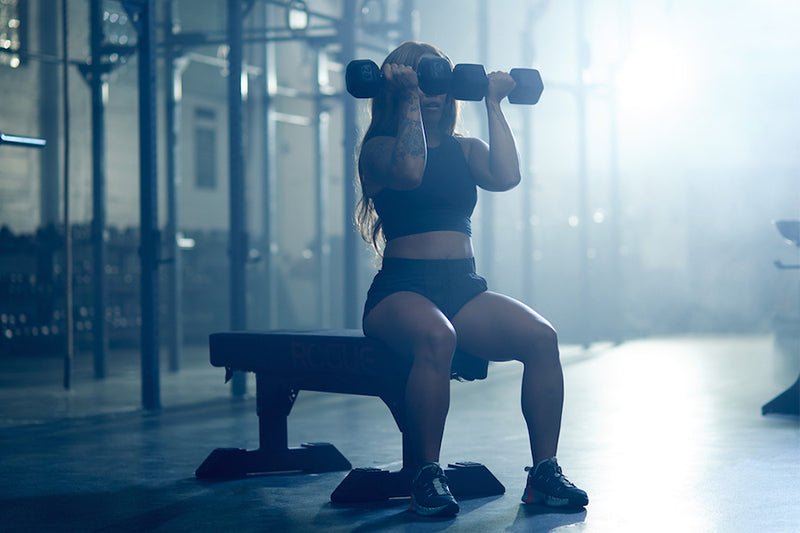
Exercise Description Main Target Muscles Shoulders Secondary Target Muscles Traps, Triceps Force Type Push Workout Type Strength Training Gym Gear Dumbbell Fitness Level Intermediate Compound/Isolated Compound Target Muscles: Glutes and Quads Lateral Jumps Overview This exercise is a famous variation of the seated dumbbell press, strengthening your shoulder muscles. It is also called seated Arnold press and is named after Arnold Schwarzenegger. This exercise targets the heads of deltoids, making them stronger. Because of the long period under strain, the exercise is excellent for people seeking aesthetic advantages. Still, you can also practice it as an accessory activity for those wanting to gain strength. How to Do It? Experiment with different toe angles to determine what feels best for you. Drive through the whole foot, aiming for three points of contact: the big toe, the small toe, and the heel. Some forward translation of the knees over the toes is acceptable as long as the knees do not deviate inward or outward significantly. If they wish to stay upright, those with longer femurs will have to allow their knees to come forward more. Neck posture is also extremely personal; some people like a neutral neck position (keeping the chin tucked throughout the lift), while others prefer to stare straight ahead. Experiment with each to find which one suits your body the best. Don't overextend the knees, but make sure they're approximately over or slightly outside the 2nd toe. Dumbbell Arnold Press Tips Maintain a flat back against the pad for the entire exercise. Allowing the head to lean forward considerably is not a good idea. Exhale as you squeeze the bicep towards the ear. Maintaining strain on the shoulders by leaving the elbows slightly bent at the top and without locking out completely. If you can't lock your elbows out overhead, it could be a sign of poor shoulder mobility caused by upward scapular rotation.
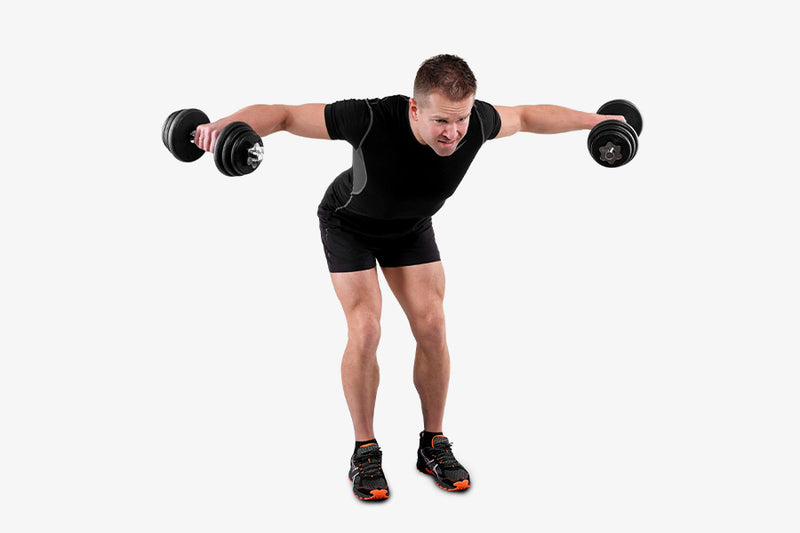
Exercise Description Main Target Muscles Shoulder Secondary Target Muscles Traps. triceps Workout Type Strength Gym Gear Dumbbell Fitness Level Beginner Compound/Isolated Isolated Power Move Pull Target Muscle Group: Shoulders Bent-Over Dumbbell Reverse Fly Overview The bent-over dumbbell reverse fly (also known as the bent-over rear delt fly) is a great exercise for building your shoulders. The bent-over dumbbell reverse fly is a popular tool for lifting. This technique targets the rear delts, which can be a weak muscle for many lifters. How To Do It? Take a few steps back to an open area and select the weight you want. Keep your hips aligned with the ground. Then, let your arms hang straight from the shoulders and hinge from the hips. Take a deep breath and draw the dumbbells towards the ceiling with the rear deltoids. Slowly lower dumbbells to their original position. Continue repeating until you reach the desired number of repetitions. Tips for Reverse Flying with Bent Over Dumbbells You should focus on the rear deltoid muscles and not the scapular retractors. Shoulder blade movement should be restricted. Do not arch your back during the top movement. Keep your abs straight. You can bend 90 degrees if you are unable to hinge. If this happens, continue the exercise as normal. You can also do the exercise sitting down. The dumbbell movement can cause shoulder pain. To prevent this, rotate the dumbbells so that the thumbs face away from each other and the palms face forward. Externally, this is known as a supinated grasp and can externally rotate your shoulder. Do not sway your head during the movement. This is about stimulating a small muscle group. Don't rely on momentum, but instead focus on the movements. Allow your arms to move, but don't restrict the elbows.
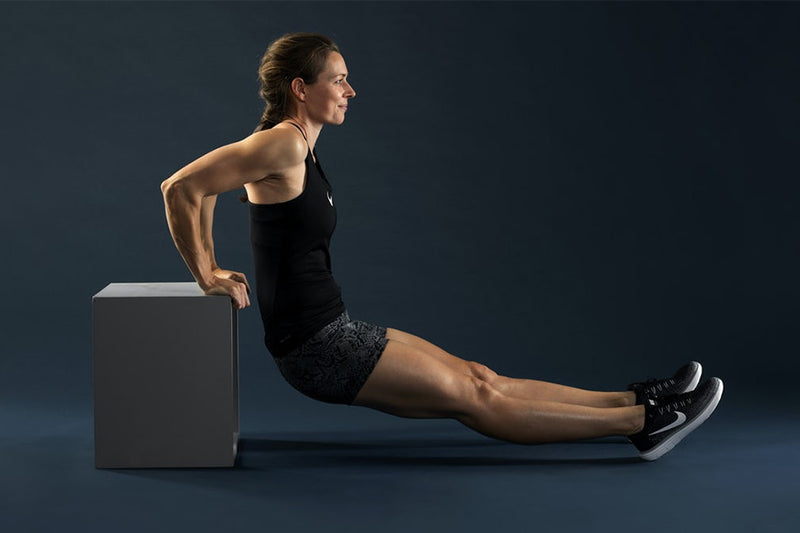
Exercise Description Main Target Muscles Pectoral, triceps and neck muscles Secondary Target Muscles Shoulders Workout Type Bodyweight/ strength Gym Gear Bench Fitness Level Intermediate Compound/Isolated Compound Power Move Push Dips Overview If you are not in the mood to lift weights and still want solid arms and shoulders, then dip it a bit! Dips are the perfect bodyweight exercises for your arms and shoulders. They are versatile, and you can do them almost anywhere. No equipment is needed. Just a bench or a chair, and you are good to go! How To Do It? Sit on the edge of a chair, bench, or a step and grip the edge next to your hips. Your legs should be extended, and your feet should be hip-width apart with the heels firm on the ground. Press your palms to lift your body, balancing your entire weight on your palms and heels and body forming a straight line. Lower yourself by bending your elbows. Keep the movement controlled and slow. Repeat as many times as you can Tips on Dips Keep your shoulders down during triceps dips. Maintaining a long neck throughout will bring the expected results. Do not Dip too low: putting excessive strain on your shoulders will only cause harm.
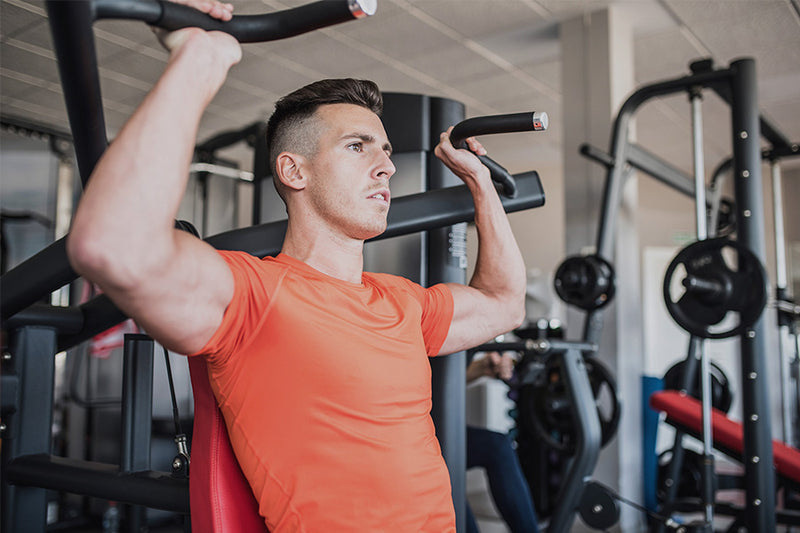
Exercise Description Main Target Muscles Shoulder Secondary Target Muscles Chest Workout Type Strength Gym Gear Chest Press Machine Fitness Level Intermediate Compound/Isolated Compound Power Move Push Target Muscles: Shoulder, Chest Front Shoulder Press Overview A shoulder press machine can help you build a stronger and bigger shoulder. You can add weights to the machine to add resistance to the exercise. However, if you are new to the shoulder press machine, make sure to start with lesser or zero weight. Using the machine helps in the isolation of your deltoid muscles. You also need to have the optimal core strength to do the exercise. You can add this exercise to your upper body or arm and back workouts. How to Do It Adjust the seat of the machine to your height. Sit on the seat. The bar of the machine should be at shoulder height. Your back should be against the pad, and your feet pressed and flat on the floor. You should bend your knees at a 90-degree angle. Hold the bars with an overhand grip. Your elbows should be bent. Lift the weight over your head. Pause at the top but avoid locking your elbows. Lower the bars in a slow and controlled motion. Front Shoulder Press Tips Start with a comfortable weight. Gradually add the weight to the machine. Focus on engaging your core muscles.
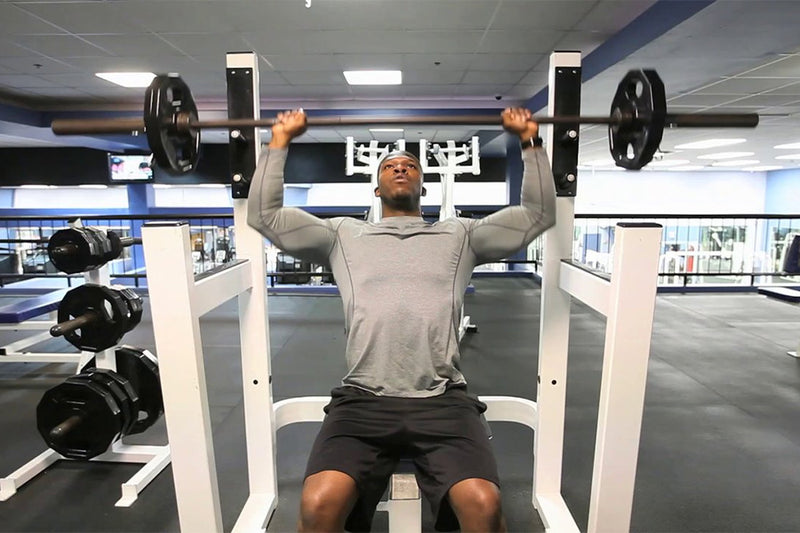
Exercise Description Main Target Muscles Shoulder Secondary Target Muscles Traps, Triceps Workout Type Strength Gym Gear Barbell Fitness Level Beginner Compound/Isolated Compound Power Move Push Target Muscle Group: Shoulders Seated Barbell Shoulder Press Overview The seated shoulder press with a barbell is a variation on the overhead press. It's used to strengthen and build muscle and shoulder strength. Vertical presses, such as the seated shoulder press with a barbell, are basic movements to train and should be included in your exercise routines. You can experiment with different variations until you find the most comfortable one, and then continue working on it. You can include the seated shoulder press with your shoulder exercises, push workouts, and full-body workouts. How To Do It? Sit on a bench with a barbell in your hands, palms facing forward. From here, press the barbell up above your head, extending your arms fully. Return to the starting position and repeat for the desired number of repetitions. Tips for Seated Barbell Shoulder Press At the top, reach high, and don't be afraid to keep your shoulders and back down. Allow your elbows to turn and point outward at the top of the movement, but keep them tucked into your ribcage at the bottom. You can control the bar by rolling your wrists in extension. Instead, think about "rolling your knuckles towards the ceiling." Press down on your abs, but don't lean back too much. Imagine that you are trying to see out the top of a window. Your ears should align with your biceps. Try a wider grip or one of the vertical pressing techniques listed on the site if your shoulders are bothering you during the movement.
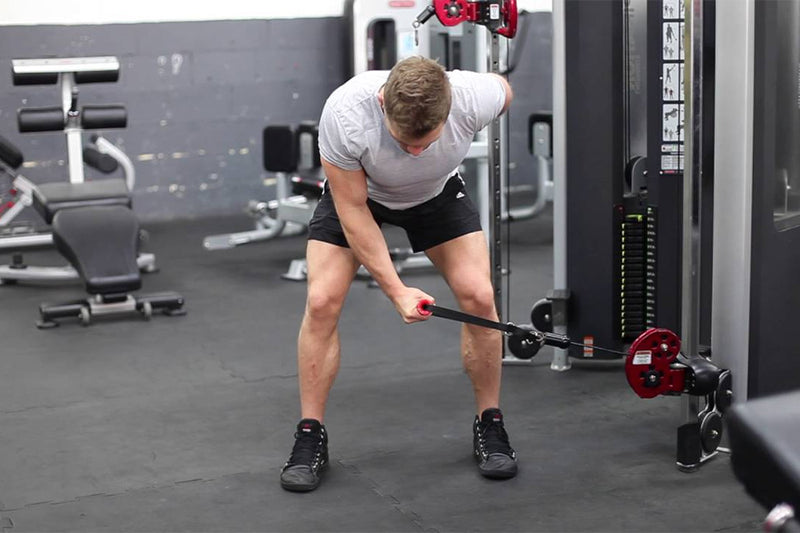
Exercise Description Main Target Muscles Shoulders Secondary Target Muscles None Workout Type Strength Gym Gear Cable Fitness Level Beginner Compound/Isolated Isolated Power Move Pull Target Muscle Group: Shoulders Single Arm Reverse Cable Fly Overview Single Arm Reverse Cable Fly is a resistance exercise that targets the rear shoulders as well as the major upper back muscles. It can be done at the gym or at home with just a pair of dumbbells. You can also add the reverse fly to your upper-body strength-training program. How to Do It Attach a single handle cable extension to a low pulley on a cable machine. Grasp the handle with your right hand and stand facing the machine with your feet shoulder-width apart. Bend your torso forward at a 45-degree angle and bring your right arm across your body so that your elbow stays close to your ribs and your palm is facing away from you. This is your starting position. Keeping your torso stationary, raise the handle diagonally across your body until your arm is fully extended and parallel to the floor. Reverse up your motion to the starting position. Complete your desired number of repetitions and then repeat with your left arm. Single Arm Reverse Cable Fly Tips Keep your weights light and practice good form. Take a deep breath and squeeze your shoulder blades. Only move your shoulders. Your body should remain as still as possible, and your arms should maintain the same form throughout your movement. It is a good idea to start with your weakest arm. Many people will find that it is their left arm.
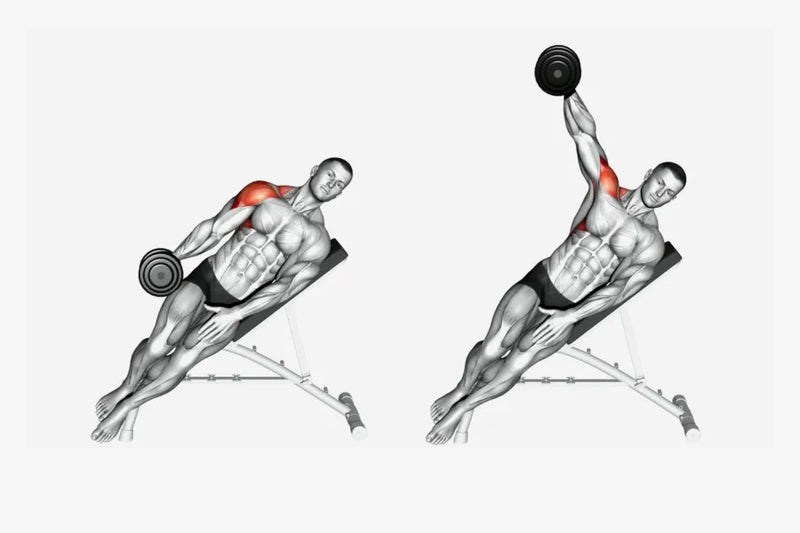
Exercise Description Main Target Muscles Shoulders Secondary Target Muscles None Workout Type Strength Gym Gear Dumbbell Fitness Level Beginner Compound/Isolated Isolated Power Move Pull Target Muscle Group: Shoulders Inclined Dumbbell Side Lateral Raises Overview The inclined dumbbell side lateral raises is an isolation exercise that is single-joint for the deltoid (especially the middle). This exercise will increase your shoulder mass and width. A great lateral head can give you the appearance of having wide shoulders. Although it can be difficult for beginners to do incline side laterals, they are an interesting variation of traditional lateral raises. How to Do it For starting position, grab a dumbbell with your right hand and lie down on your left side on an inclined bench. The angle should be between 40-60 degrees. Place the dumbbell on your right side, with your palm facing your thigh. Without bending your elbow, lift your arm so that it aligns with your shoulder rotating your palm inward. Keep your weight under control. Continue for the prescribed number of repetitions with your right hand. Then switch to your left arm. Inclined Dumbbell Side Lateral Raises Tips Here are some helpful tips about performing lateral dumbbell incline-side-lying dumbbell raises safely and effectively. During the lift, you should slightly bend your elbow. Your working arm should be parallel to your body in the final position. Ensure that your palm faces forward at the end of each movement. Keep your focus on the slow, controlled movements throughout the exercise.
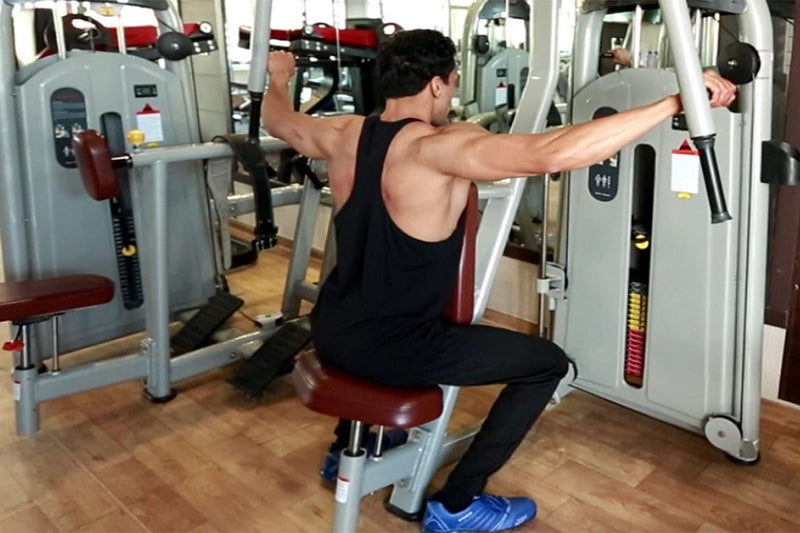
Exercise Description Main Target Muscles Shoulders Secondary Target Muscles Traps Workout Type Strength Gym Gear Machine Fitness Level Beginner Compound/Isolated Isolated Power Move Pull Target Muscle Group: Shoulders and Traps Machine Reverse Fly Overview The machine reverse fly is a machine version of the bent-over dumbbell reverse fly. It targets the shoulder rear delt muscles. The machine reverse fly can be used to isolate the rear delt muscles and stabilize the core. Rear delts are often an underactive and lagging muscle group. Therefore, it is important to train them in your workout program. How to Do It While seated, face the fly machine with your chest against it and your torso in front of the handles. Reach forward and grab each handle with a neutral or pronated grip. Contract your rear delts while keeping your elbows bent. Then open your arms in a reverse fly motion. Slowly lower your handles to their original position. Repeat until you reach the desired number of reps. Machine Reverse Fly Tips You should ensure that the movement is entirely by the upper arm, moving in the shoulder socket, and not scapular retract. The shoulder blades should not move drastically - there might be some retraction, but nothing too dramatic. Do not allow your head to protrude forward while wide open your arms.
